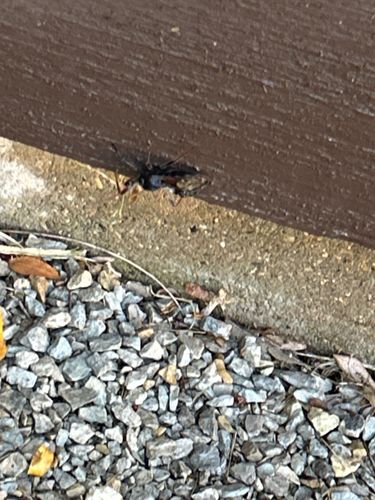Spider Wasp
Scientific Name: Pompilidae (a family of wasps, specific species cannot be determined from the image alone)
Order & Family: Order: Hymenoptera, Family: Pompilidae
Size: Size varies significantly among species within the Pompilidae family, ranging from small species just a few millimeters long to very large species like the tarantula hawk (Pepsis spp.) which can be several centimeters long. The individual in the image appears to be a medium-sized spider wasp, likely in the 1-3 cm range.

Natural Habitat
Spider wasps can be found in a variety of habitats worldwide, including gardens, forests, grasslands, and urban areas, wherever their spider prey is abundant. They often burrow in sandy soil or use existing crevices.
Diet & Feeding
Adult spider wasps primarily feed on nectar and pollen. The larvae, however, are carnivorous, feeding on the paralyzed spiders provided by their mother.
Behavior Patterns
Spider wasps are solitary, meaning they do not live in colonies. Females are known for their unique hunting behavior: they seek out spiders, paralyze them with a sting, and then drag them back to a prepared nest (often a burrrow in the ground, a crevice, or a natural cavity). The paralyzed spider serves as a living food source for the wasp larva after an egg is laid on it. Adults feed on nectar and pollen. They are generally not aggressive towards humans unless provoked or threatened.
Risks & Benefits
Potential Risks: Spider wasps possess a potent sting, especially larger species like the tarantula hawk. While generally not aggressive, their sting is very painful to humans, though typically not medically significant unless there's an allergic reaction. Potential Benefits: They act as a natural biological control for spider populations, helping to regulate spider numbers in ecosystems. They also serve as pollinators by feeding on nectar.
Identified on: 9/1/2025